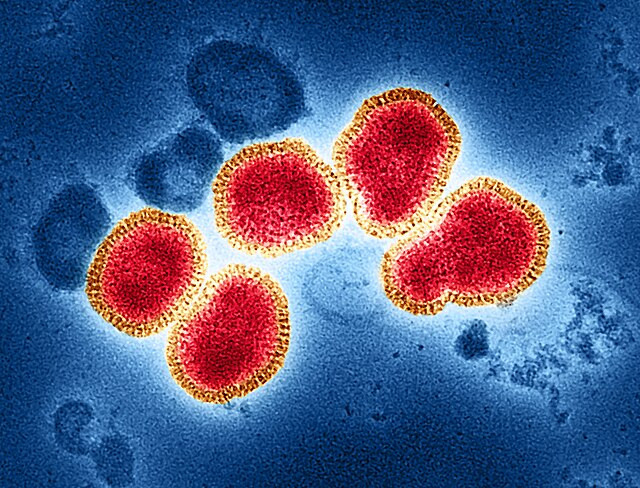In an unprecedented development, the U.S. is grappling with its largest outbreak of bird flu in humans, exacerbated by extreme heat conditions that have compromised personal protective equipment (PPE) for workers handling infected poultry. Officials have confirmed that four individuals have tested positive for the H5N1 virus, with a fifth case likely to be confirmed soon. This marks the first significant cluster of human cases of bird flu in the country.
The outbreak has been particularly intense in Colorado, where a heatwave likely played a crucial role in the malfunction of PPE for workers culling infected poultry. The state's temperatures soared to 104°F (40°C), causing goggles and masks to fail, and leading to increased virus transmission due to feathers and debris being spread by industrial fans.
"When you change a global system like climate so profoundly, small shifts can have seismic impacts, sometimes in unexpected ways," said Alexandra Phelan, an associate professor at Johns Hopkins Bloomberg School of Public Health.
The workers were engaged in culling a flock of 1.8 million egg-laying chickens infected with H5N1. The laborious process involves handling each bird individually, which is dangerous due to the high mortality rate of about 50% among people infected with the virus. Amidst the intense heat, 60 out of 160 workers developed symptoms, with five testing positive for the virus. The remaining 55 workers, who tested negative for H5N1, were diagnosed with other respiratory illnesses.
The Centers for Disease Control and Prevention (CDC) has been actively involved in addressing the outbreak. "As the epidemiological investigation proceeds, it is important to note that additional cases may be detected," said Nirav Shah, principal deputy director of the CDC. The CDC dispatched a team of experts to Colorado, including an industrial hygienist to help reduce exposure risks for workers continuing to handle infected chickens.
The outbreak has raised significant concerns about the role of climate change in amplifying the spread of diseases. Extreme weather events, like the heatwave in Colorado, are becoming more frequent due to climate change, and they can exacerbate the spread of pathogens like H5N1. "When you have unusual climate events, it may disrupt usual migratory patterns and other human and animal behaviors, opening new avenues of risk," said Jean-Pierre Vaillancourt, a professor of veterinary medicine at the University of Montreal.
In Colorado, the bird flu outbreak has also affected dairy herds, with genomic sequencing showing a link between the virus in cows and chickens. The USDA reported that the virus might be transported by people between farms, further complicating containment efforts.
The first human cases in U.S. poultry workers since 2022 were reported in this outbreak, with workers experiencing symptoms such as conjunctivitis and flu-like symptoms. The CDC has not changed its risk assessment for the general public but continues to monitor the situation closely. "CDC is not recommending H5-specific vaccine for livestock workers, given the mild symptoms noted thus far and the absence of any changes to the virus's genetic makeup," said Shah.
The bird flu outbreak underscores the need for enhanced biosecurity measures and a greater focus on climate considerations in public health responses. Phelan emphasized the importance of incorporating climate considerations into health and safety measures, saying, "Governments need to actively and urgently incorporate climate considerations into all health and safety measures more than simply at the surface level."
The outbreak in Colorado is part of a broader trend of increasing bird flu cases across the U.S. Nearly 100 million poultry birds have been affected by the virus since 2022, spreading across 526 counties in 48 states. The virus has also infected dairy cows in 13 states, with officials ensuring that milk and meat products remain safe for consumption.
Health officials are particularly concerned about the potential for the virus to mutate and become transmissible between humans, which could lead to a more severe outbreak or even a pandemic. "It's uncommon for bird flu viruses to jump to humans, but it does occasionally occur," said David Boucher, director of infectious disease preparedness and response at the Department of Health and Human Services.






